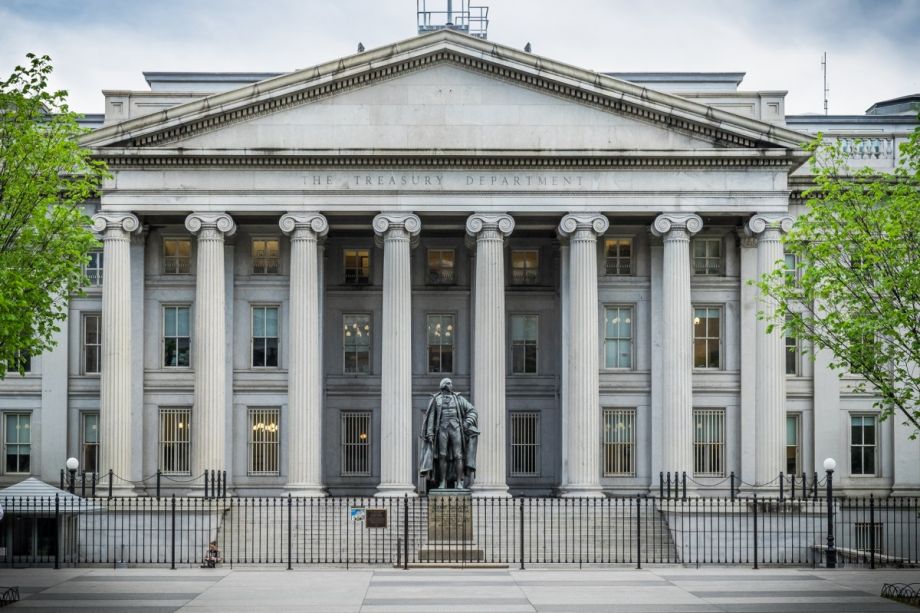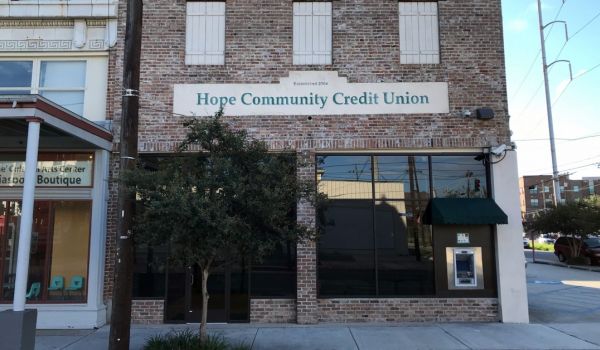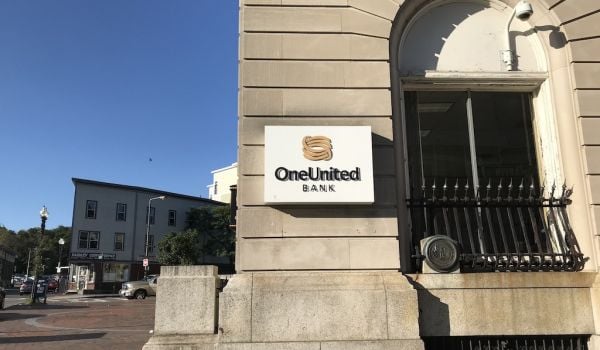In the midst of economic crises, it’s not unusual for big banks to get what they want out of any relief offered by the federal government.
In response to the 2008-2009 financial crisis, the $700 billion Troubled Assets Relief Program provided funding for the U.S. Treasury to buy shares from banks, supposedly to help stabilize the financial system. Of that, $125 billion went straight to purchasing shares from the nine largest banks in the country. All in all, more than 700 banks sold shares to the U.S. Treasury under TARP.
Yet TARP also included a much smaller program to provide similar investments for community banks and credit unions that operated in markets underserved by mainstream banking institutions. Known as the Community Development Capital Initiative, it had more favorable terms compared with the mainstream TARP investment program.
Hope Credit Union was one of the institutions served by that initiative. Credit unions can’t sell shares like a bank, but if more than half of a credit union’s members are at or below low-income thresholds set by the U.S. Census Bureau, it can take on a special kind of deposit that isn’t covered by federal deposit insurance or any other federal guarantee. It’s called secondary capital. Hope got $4.5 million in secondary capital from the U.S. Treasury under TARP.
“For us it’s the equivalent of stock,” says Hope CEO Bill Bynum. “But we didn’t use it to plug holes in our balance sheet, we used it to expand our reach and deepen our impact. It was really important in our ability to go from 8 to 30 locations, which included taking over four bank branches in the Mississippi Delta that would have otherwise closed.”
In dollar terms, Hope Credit Union more than doubled in size during the Great Recession. Chartered in 1995 and headquartered in Jackson, Mississippi, Hope now has more than 35,000 members, more than 70 percent of whom are Black, located all up and down the Mississippi Delta, New Orleans, Memphis and Alabama. The credit union repaid the Treasury in 2019, after paying $1.5 million in interest over the life of the investment.
Only $571 million in investments went out under the Community Development Capital Initiative, to just 85 institutions, and the U.S. Treasury stopped making investments under the program after October 2010. But now, as part of the recently passed coronavirus relief legislation, there’s $9 billion in new funding for the U.S. Treasury to make a new round of these investments.
“It’s a gargantuan amount of money,” says Jeannine Jacokes, chief executive at the Community Development Bankers Association. “It’s either going to be absolutely game changing or it’s going to be a dud. It’s all in how Treasury implements it.”
The funding, this time known as the “Emergency Capital Investment Fund,” is buried on page 2,282 of the 5,593-page Consolidated Appropriations Act, 2021, the longest bill ever passed by Congress.
The overall bill was disappointing for many. It actually combined 12 annual spending bills totaling $1.4 trillion with another $900 billion in funding for coronavirus relief and response efforts.
The $900 billion includes another round of direct payments of up to $600 per adult and child in a household. Half of voters in one poll think $600 is not enough. At least this time around the payments won’t exclude families where one adult’s immigration status made the entire household ineligible for the $1,200 first round of payments.
Enhanced unemployment benefits were restored, but only for $300 a week, half what they were for much of the year in response to the pandemic. There’s an extension of a tax credit to subsidize paid sick leave, but after 2020 employers will no longer be federally required to provide paid sick leave for employees affected by COVID-19.
Transit agencies are getting $14 billion in aid — less than half of what industry lobbyists were asking for. State and local governments got an extension on the earlier $150 billion in funding for COVID-19 response, originally set to expire at the end of 2020 — but no new aid to cover looming budget cuts that threaten millions of public sector employees across the country.
There’s also $13 billion in increased SNAP and child nutrition benefits to help feed an estimated 17 million children who are food insecure during the pandemic, and $25 billion in rental assistance as well as an extension of a federal moratorium on evictions. There’s $15 billion in relief grants for live venues, independent movie theaters, and cultural institutions. The Paycheck Protection Program is getting another $284 billion, with tweaks in response to some of the program’s shortcomings as revealed in earlier rounds, and opening up the program for eligible businesses to apply for a second forgivable loan.
The $9 billion Emergency Capital Investment Fund isn’t supposed to be a bailout for eligible banks and credit unions. It’s intended to position the eligible lenders to make new loans as the economy recovers over the next few years — particularly small businesses loans.
Small businesses employ about half the nation’s workforce, and created two-thirds of new jobs from 2005-2019, according to the Small Business Administration. But the consolidation of the banking sector over the past several decades and changes in banking regulation have caused a dramatic decline in access to small business loans that ultimately hampered the recovery from the Great Recession, according to research from the Harvard Business School.
Historic disparities in access to small business loans mean the decline in small business lending has hit some neighborhoods worse than others. A 2017 study from the Federal Reserve Banks of Atlanta and Cleveland found that Black businesses owners apply for funds at a 10 percent higher rate than white-owned firms, but their approval rates are nearly 20 percent lower. When Black business owners did get approved for financing, only 40 percent received the full amount they requested, compared to 70 percent of white business owners. Forty percent of black business owners surveyed were so pessimistic about being approved for bank loans that they don’t even bother to apply.
The Institute for Local Self-Reliance, a nonpartisan research and advocacy group, recently found that counties with a higher share of African American residents have lost nearly half of their small community banks since 2006, a significantly steeper decline in local banks than other counties experienced.
The results of the Paycheck Protection Program further highlighted and exacerbated disparities in access to small business loans. Access to the program was largely dependent on existing borrowing relationships with banks — but in the five years leading up to 2020, just 31 percent of Black-owned employer firms had accessed credit from a bank or credit union versus 52 percent of white-owned employer firms, according to an FDIC survey.
A Brookings study of Paycheck Protection Program data found borrowers in majority-Black neighborhoods waited the longest out of any other subset of borrowers for loan approvals, a full week later on average than borrowers in majority-white neighborhoods. An Associated Press analysis released on December 31 found thousands of minority-owned firms waited months for Paycheck Protection Program loans while white-owned counterparts including high-income private physicians and law firms received theirs.
An infusion of $9 billion won’t be enough to reverse what has been a multi-decade decline in local banks and small business lending. From the 1930s to the 1980s, there were around 14,000 community banks across the country, but today there are less than 5,000. Credit unions have experienced a similarly precipitous decline.
But for those institutions that have survived, this $9 billion is the hardest kind of funding to raise. Deposits are comparatively easier to attract, and these days corporations like Netflix have started taking an interest in moving deposits from mainstream banks to depositories like Hope Credit Union, which got a $10 million deposit from the video streaming giant in 2020.
Selling shares or raising secondary capital is more challenging. Credit unions and most community banks can’t just sell more shares on the stock market, for example. Only a small portion of credit unions have ever raised secondary capital. Besides the Community Development Capital Initiative, Hope has previously raised secondary capital mostly from private foundations and also larger regional banks.
“Secondary capital is the fuel we need to grow and expand our impact and allows us to import capital like the Netflix deposit,” says Bynum. “Each dollar of secondary capital allows us to attract $8 in deposits. Being able to import capital into places where wealth has been extracted for generations is vitally important.”
Calls for the U.S. Treasury to create a new fund, based on but larger and better structured than the earlier Community Development Capital Initiative, began soon after the pandemic took hold and it was clear that small businesses would be hit hard by shutdowns to fight the spread of the virus. Industry advocates worked closely on legislative language with the staff of Rep. Maxine Waters, Democrat and chair of the House Committee on Financial Services, as well as Senator Mark Warner.
“I would say it was a combination of recognizing the immediacy and the need for rebuilding this sort of capillary banking system in the United States, and recognizing the failure of PPP and the need to get capital out to communities, small businesses, basic main street businesses, let alone woman- or minority-owned businesses,” says Cathie Mahon, CEO of Inclusiv, formerly the National Federation of Community Development Credit Unions. “While many small businesses hold deposits at mainstream banks, what we learned from PPP is having a depository relationship with a bank is not the same as having a lending relationship with a bank.”
Those conversations resulted in the Jobs and Neighborhood Investment Act, which Senator Warner introduced into the U.S. Senate in July. Some of the measures contained in that bill were folded into the HEROES Act, which passed the House in October, but never came up for a vote in the Senate. The $9 billion finally came through as part of the longest bill ever passed by Congress.
Other than the amount of funding — $9 billion for the new Emergency Capital Investment Fund versus $571 million from TARP’s Community Development Capital Initiative — one key difference is the intent of the program to make long-term investments in the growth of underlying institutions, as opposed to the shorter-term stability focus of TARP.
In exchange for investments under the Community Development Capital Initiative, underlying institutions paid the Treasury an annual dividend of two percent for the first eight years and 9 percent every year after, up to 13 years.
Under the new program, the legislation says there are no payments required to the Treasury for the first two years, and a maximum two percent annual dividend for the following eight years. Lenders can also reduce their annual dividend payment to as low as 0.5 percent, depending on how much they’re able to ramp up lending to low- and moderate-income borrowers.
For banks, selling shares also raises concerns for ownership structure and what happens when it comes time for the Treasury to sell its shares. The legislation does have restrictions on what percentage ownership Treasury can take on. It also says Treasury’s ownership share does not have to count against a bank for the purpose of determining minority-ownership status. And, unlike TARP, the legislation gives each bank the right of first refusal to buy back shares when the Treasury wishes to sell them.
With TARP there was also a bit of a stigma attached, that the institutions receiving those investments were in need of a bailout or weren’t performing well enough on their own. The terms of the TARP investments also put pressure on institutions to repay the Treasury as soon as possible.
With this new fund, even with the word “emergency” in its name, Mahon sees potential for it to serve as a template for an ongoing federal investment vehicle in support of a more decentralized financial system.
“I know the impetus for it is very much rooted in the pandemic, and I know that’s the immediate and urgent need,” says Mahon. “But I’m hopeful that this will bring more institutions to the table, to use it for the full term, and to work with Treasury so this can be seen as an ongoing source of capital injection.”
EDITOR’S NOTE: We’ve corrected the number of community banks in the U.S. in the 1980s.
This article is part of The Bottom Line, a series exploring scalable solutions for problems related to affordability, inclusive economic growth and access to capital. Click here to subscribe to our Bottom Line newsletter.

Oscar is Next City's senior economic justice correspondent. He previously served as Next City’s editor from 2018-2019, and was a Next City Equitable Cities Fellow from 2015-2016. Since 2011, Oscar has covered community development finance, community banking, impact investing, economic development, housing and more for media outlets such as Shelterforce, B Magazine, Impact Alpha and Fast Company.
Follow Oscar .(JavaScript must be enabled to view this email address)

















